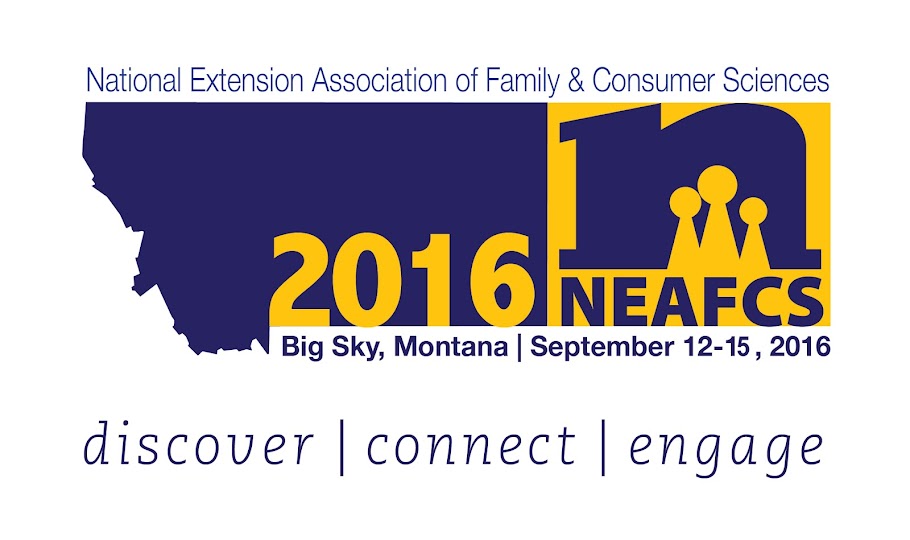4-H and Family and Consumer Science
Extension Agent
Montana State University Extension - Pondera County
20 4th Avenue SW
Conrad, MT 59425
Phone: 406-271-4052
There
is a mystique about Montana that draws travelers to my home state.
Perhaps it is the romantic notions of the late authors A.B. Guthrie or Ivan Doig. Maybe it is the vast empty landscapes of the prairie or the wild,
uninhabited woods. The Montana Association of Extension
Family and Consumer Science Agents (MEAFCS) is excited to host the NEAFCS
Conference this September in Big Sky, Montana. We want to extend an
invitation to come early or stay late to explore some of those things that we
in Montana hold dear.
Over
the next several months, we will be sharing a little bit of Montana on Facebook
and the MEAFCS blog just in case you do not have a chance to explore all
147,000 square miles within our borders.
 |
| Lake McDonald, Glacier National Park, Montana |
There
are many words that people associate with Montana…words that come to mind
include: wildness, open spaces, scenic splendor, rugged and reverent.
Many people think of Glacier Park when they think of Montana. Yet, the
rugged mountains are only one third of the 147,000 square miles that make up
the state. Mystique fits the mountainous part of the state because of its
craggy peaks, clear and cool rivers and lakes, and the woodsy scent of the forest.
 |
| Clouds, sky and prairie near Choteau, Montana |
There
is a mystique about the prairie which composes the other two-thirds of the
state. The prairie is as diverse as the mountains. Recently, driving near
Conrad, I marveled at being able to see approximately 60 miles in all
directions. The Sweetgrass Hills, Highwood Mountains and Big BeltMountains are dominant isolated volcanic mountains that rise above the prairie,
providing helpful landmarks for residents. There are long, low hills, high
plain benches, steep coulees and arrow straight roads. The prairies are
as expansive as the sky, the wind that sweeps the prairies is multifaceted from
gentle to raging, and on a clear day we can see Canada!
 |
| Grain Elevator, Choteau, Montana |
I
grew up in Choteau [pronounced Show toe], Montana, in
the shadows of the Rocky Mountain Front. It is where the prairie
meets the mountains. The change in landscape is abrupt. There is no
transition from prairie to hills to mountains. It is prairie, then it is
mountainous. I worked as a hand on a couple of ranches
at the foot of “the Front.” It was not far from where a now famous colony of
duckbilled dinosaurs were buried in the depths of a massive landslide and
revolutionized how paleontologists understand dinosaur family behaviors.
 |
| Ear Mountain, Choteau, Montana |
 |
| Walling Reef with Pink Sanfoin along the Rocky Mountain Front |
 |
| Fence on the front ... not enough to stop grizzlies. |
The Front is unique in habitat, too. Near Ear Mountain is a
little knob of rock called Pine Butte. A butte is a small, steep hill
with a flat top. Around Pine Butte (near Choteau) are some of the largest
wetlands along the Front abundant with natural springs, peat bogs and plant and
animal species. About one third of the native plant life found in Montana is
found here, including rare species. It is also an interface for the grizzly bear
because of the proximity between the mountains and the plains. I remember some
of my classmates being late for school because a grizzly was in the front yard
and they could not leave the house. A few times grizzly bears wandered into
Choteau and needed an escort out of town. To the north, the town of Dupuyer
[Dew-poo-yer] had to fence in the school, not to keep the children in, but rather
to keep the grizzlies out!
We hope you will have a wild time enjoying the animals,
landscape and people when you visit us in Montana.
If
there are youth who will be traveling to Montana with you, or following your
adventures in Montana from their homes, they might enjoy facts and interesting
tidbits from Travel Montana: www.montanakids.com
 |
| Rainbow at Eastham Junction, Montana Thank you to Wendy Wedum for this post and her great Montana photos! |
 |
| Wild Wendy in the kitchen! |








